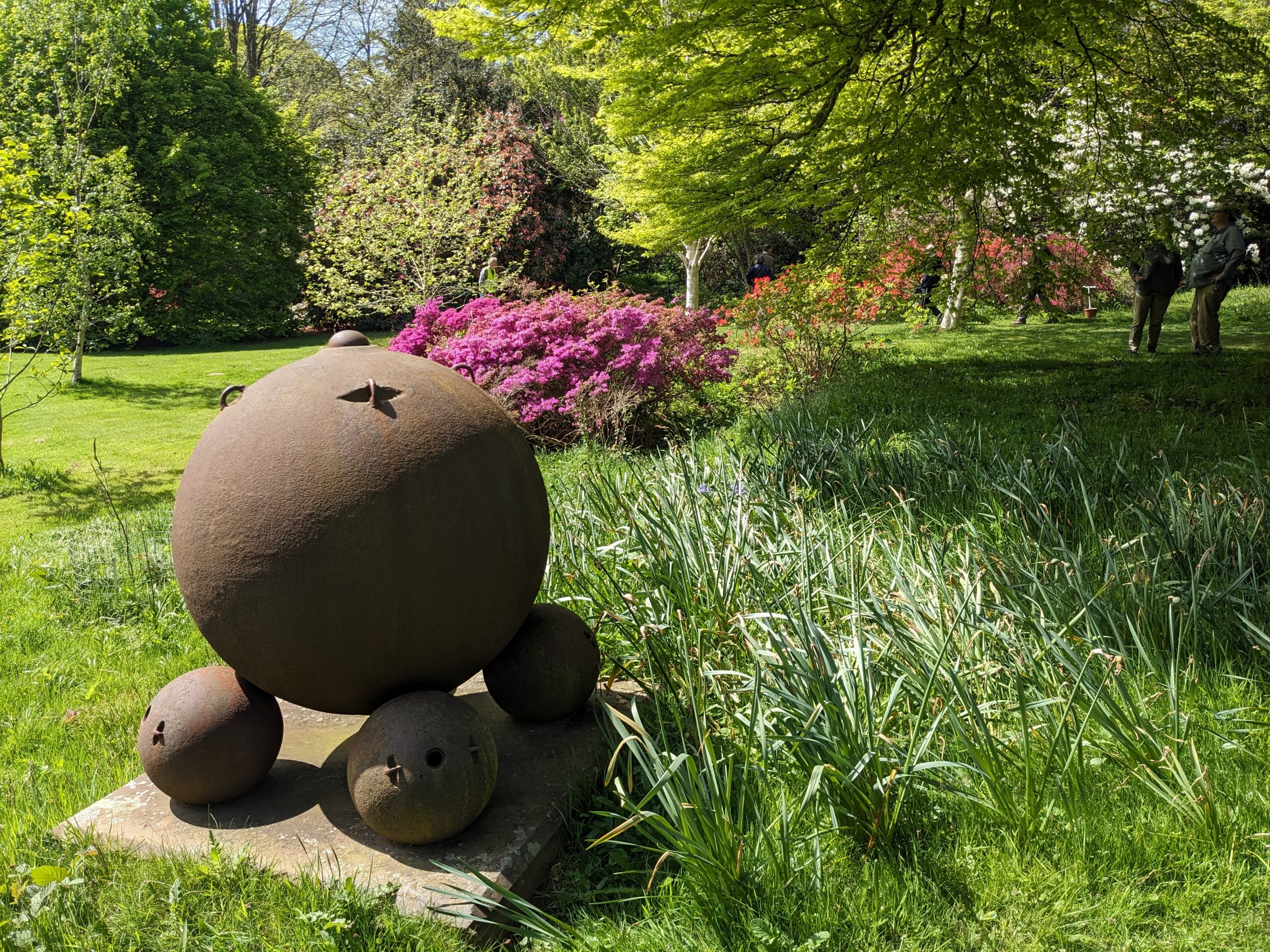
After a prolonged wet and dull Spring, the weather in May was presenting a much more friendly face when a group of 18 members visited Sandling Park, near Hythe.
This estate has been in the Hardy family since the late 19th century, and the gardens date back to that time. Successive members of the family have landscaped and improved the gardens, whilst adding rare and important trees and plants. The gardens cover 25 acres, set mainly in woodland that was part of a medieval forest, growing in a pocket of greensand and drained by natural streams. There are many champion trees listed at Sandling in the Tree Register.
The hurricane of 1987 rampaged through the garden, which lost 400 trees whose falling caused serious damage to the under-planted species. Restoration of the gardens was supported by donations from other important collections, such as Kew, Wakehurst and Windsor. Planting continues to this day.
The Hardy family were very hospitable to us; Prunella introduced the visit by describing the development of the house and gardens and Geoffrey kindly guided us through the gardens ensuring that we were made aware of specific points of interest. “Remember to look back!” was a refrain during our visit – a reminder that the aspect behind us might frequently be as exciting as that ahead…
Some trees from the original landscaping are still evident and obvious, as for example the splendid Tulip Tree Liriodendron tulipifera, the Monterey Pine Pinus radiata and the Giant sequoia Sequoiadendron giganteum (which soared above the trees in the garden). The twisted Sweet olive Osmanthus delavayii is probably the oldest of this tree in the country; the Incense cedar Calocedrus decurrens is one of the best specimens of this tree in the country
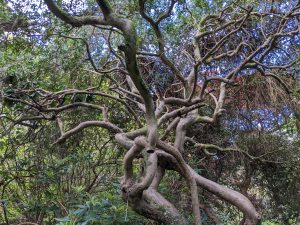
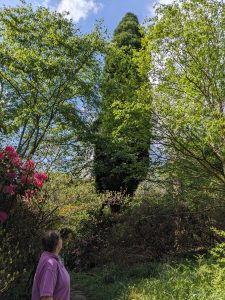
Always eye-catching throughout our tour were the rhododendrons and azaleas – of which Sandling has a very special collection. The timing of our visit meant we could enjoy the rhododendrons in full bloom and admire the size the contrasting colours in an array from purest white through purple, blue, pink and red; the azaleas feature especially as a collection of plants imported from Japan.
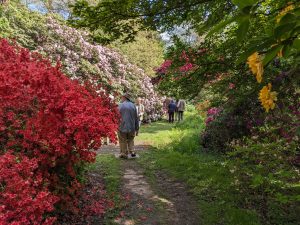
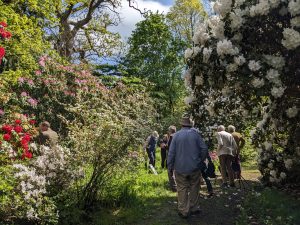
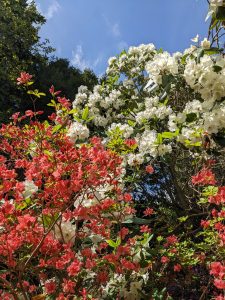
Other eye-catching trees included the Pocket handkerchief tree Davidia involucrata, a Cut-leaved Beech Fagus Sylvatica Asplenifolia (planted in the 19th century) and a Weeping Beech Fagus sylvatica “Pendula” which, even having lost one half of the tree, presented a splendid and impressive picture.
Our group was inquisitive and interested, and explored any number of other exotic and unusual trees and shrubs close to the path…American Oaks; Birches; Magnolias; Acer; Enkianthus to name but a few amongst so many.
Our grateful thanks go to the Hardy family; our visit ended all too soon…we would love to return.

